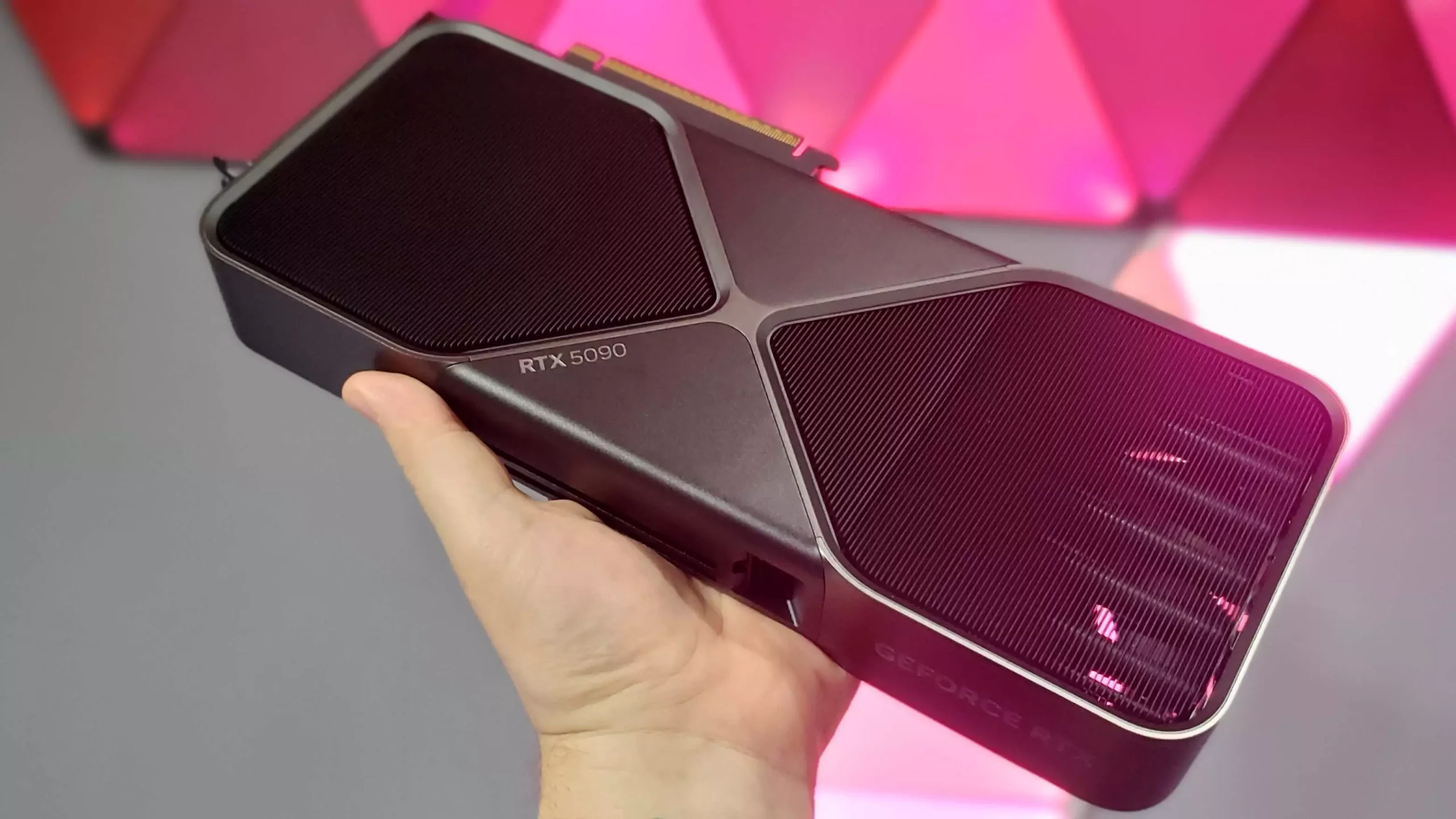The graphics card market, notorious for its wild price swings and availability crises, is experiencing a refreshing phase of normalization just months after the launch of Nvidia’s RTX 5090. Launched on January 30, the GPU was initially greeted with sky-high demand and parallel price hikes. However, the recent phenomenon of RTX 5090s being available for slightly less than Nvidia’s suggested retail prices marks a significant turning point.
In the UK, for example, retailers like Overclockers UK have recently made a seemingly modest breakthrough by offering the Palit GeForce RTX 5090 GameRock with a price tag of £1,879.99—just under the official MSRP of £1,889. While it may only be a few pounds under list price, it’s a move that signifies the fading grip of exorbitant markups that have taken the GPU market hostage. This is a welcome change from a climate dominated by inflated prices and scarcity.
Regional Disparities: A Tale of Three Countries
However, the excitement is overshadowed by geographical disparities, illustrating how localized economic factors heavily influence pricing. In the United States, the RTX 5090 is advertised at its suggested retail price of $1,999, but you’ll hardly find it at that figure. Newegg, a leading retailer, lists the lowest price at an astonishing $2,919.99, indicating that the U.S. market is still grappling with the fallout from previous surges in demand. While the average gamer may rejoice at the availability of units, actual prices remain inflated in comparison to what is considered ‘normal’.
Meanwhile, across the Atlantic in Finland, there is a somewhat mixed message. The RTX 5090 has appeared at €2,299, below the EU-regulated €2,339 price tag. Yet, a closer look reveals that major retailers have reverted prices back up to the original MSRP, demonstrating the fickle nature of pricing trends in the GPU business. As of now, consumers in various countries remain caught in a state of confusion, navigating through layers of pricing variations and fluctuating availability.
Market Adjustments: The Impact of Tariffs and Global Demand
The GPU predicament can be attributed to a multitude of catalysts. From the unforeseen demand surge driven by the gaming boom and cryptocurrency miners to the ongoing pandemic’s ripple effects, the market has been plagued by instability. Even now, tariffs and trade policies complicate the American landscape, where buyers are scrambling to avoid what could be potentially higher costs stemming from tariff hikes.
In the case of AMD’s Radeon RX 9070 XT, which continues to be priced above its £560 UK MSRP, we see the stubborn remnants of a previous pricing climate. This persistent inflation in prices showcases the lingering impact of both market dynamics and consumer behavior, suggesting that some products may require additional time to stabilize compared to the Nvidia line.
Despite this ongoing struggle, the general trajectory appears promising. The fact that many of the Nvidia RTX 50 lineup can now be found at MSRP or below in markets like the UK indicates an overall return to what may be termed ‘normal.’ If all goes well and no major market shocks return, one can only speculate that an even broader price adjustment will take hold in territories like the U.S.
The Road Ahead: Ample Supply Promises Lower Prices
As we weigh the complexities of the current market environment, renewed supply chains offer a glimmer of hope. With increasing availability, one could anticipate that U.S. prices might trend closer to those of international markets. However, the unpredictability of trade policies under the current administration poses a formidable question: can we indeed count on a return to steadiness in the GPU market?
It remains vital for consumers to stay informed about pricing changes and market trends, as even small shifts can significantly influence purchasing power and decision-making. As gamers and creators continue to seek what’s suitable for them, understanding the factors at play will only empower them further. The horizon may seem brighter than in previous months, but it’s crucial to remain vigilant and ready to adapt as the landscape continues to evolve. After all, navigating this revived market ultimately requires a keen eye and a healthy dose of patience.

